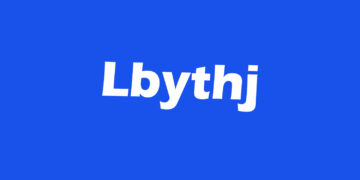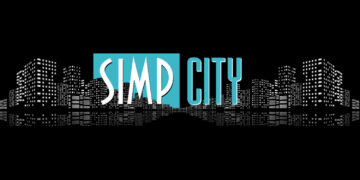| RAD, short for rapid application development, accelerates software projects by using quick cycles and real user feedback. It helps teams cut delays and adapt quickly to changing needs. Rapid Ext JS stands out as a trusted RAD tool with reusable parts and low-code flexibility. |
Rapid Application Development (RAD) is now central to enterprise software development. It accelerates the development process by focusing on quick iterations and clear user feedback. This method enables fast delivery while keeping projects focused on business goals.
RAD helps cut delays and makes projects more flexible. Teams can fine-tune applications as they get constant feedback from stakeholders. The result is application development that stays relevant and delivers measurable value.
Among modern RAD tools, Rapid Ext JS has earned a strong position. It offers reusable components, straightforward workflows, and reliable support for large-scale RAD projects. Its low-code design simplifies complex software development while maintaining flexibility.
This article shares five strong reasons why enterprises rely on Rapid Ext JS for their RAD needs. This helps in increasing user satisfaction and delivers dependable results. Over time, it has earned the trust of organizations across the globe.

1. Accelerated Development Without Sacrificing Quality
| Rapid application development speeds up projects without lowering standards. The RAD, also called Rapid application development, model improves results through frequent iterations driven by user feedback. This approach lets teams move faster while keeping applications stable and dependable. |
Rapid Ext JS enables rapid prototyping through enterprise-grade, reusable components. Developers can create user interfaces instantly with pre-built grids, charts, and forms. Business users get working models early in the development phase, allowing quick feedback loops.
Rapid application development tool simplify complex tasks with structured resources. Teams avoid repetitive coding by reusing components that are tested and consistent. This reduces development costs and keeps projects running more smoothly.
The RAD model helps cut delays and keeps the development cycle moving faster. With Ext JS, companies have shortened timelines by weeks or even months. Developers spend less time on UI details and more time on performance and logic.
The RAD model reduces delays and speeds up the development cycle. Business users review updates quickly and share changes that developers apply right away. This continuous exchange helps keep the application in line with real needs.
By combining speed with quality, Rapid Ext JS proves the value of modern development tools. It helps enterprises move faster while delivering reliable results. The software fits the user’s needs and still arrives on time.
2. Seamless Low-Code Experience for Complex Applications
| Rapid Ext JS is an Extensible JavaScript Framework, a low-code platform that allows you to build complex applications rapidly. It cuts down the amount of coding needed. Its visual tools make quick iterations easy and keep projects aligned with user needs. This approach cuts backlog, speeds up delivery, and improves customer satisfaction. |
Enterprises today demand rapid development without the complexity of heavy coding. The RAD approach makes this possible through intuitive, visual development tools. With drag-and-drop features, both developers and business users can design interfaces that match user needs.
Low-code platforms like Rapid Ext JS are really helpful in reducing the effort required for developing complex systems. Developers can manage complex data models without writing endless lines of code. This flexibility allows teams to build data-intensive applications quickly while maintaining accuracy.
The rapid application development model uses constant feedback to give quick iteration. Business users can test early versions and help ensure customer satisfaction. This cycle improves alignment between applications and real business requirements.
Compared to other development methodologies, the RAD methodology shortens timelines significantly. It helps teams deliver projects that match the speed of changing markets. By reducing backlog, enterprises free up time to drive innovation instead of handling routine fixes.
Rapid application development tools improve teamwork across all roles. Visual workflows make it easier for technical and non-technical members to communicate. This keeps projects on track and aligned with their goals.
This software development methodology has become a key driver in modern software engineering. It combines speed with control, giving enterprises a dependable way to handle complex projects. With low-code design, rapid application platforms ensure faster delivery and higher customer satisfaction.
3. Rich Ext JS Component Library for Enterprise-Grade Apps
| Ext JS, which is an Extensible JavaScript Framework, provides developers with over 140 ready-made UI components to speed up low-code development. Teams can quickly develop the prototype using built-in tools and user feedback. The library delivers seamless integration and reliable enterprise performance. |
Ext JS provides one of the best low-code development libraries for enterprise software. It gives developers access to more than 140 professionally designed UI components. This makes low-code application development faster and more efficient.
The library includes grids, charts, forms, and dashboards built for real-world use. Each component is pre-tested and tuned to perform well on all devices and browsers. This delivers a consistent user interface without the need for extra fixes.
Low-code software benefits from quick feedback and multiple iterations. Teams can use a drag and drop interface to adjust layouts with direct user input. Functional prototypes emerge quickly, helping teams refine ideas before building a fully functional system.
This shows how the rad process supports enterprise applications in practice. Components simplify the entire process while keeping applications responsive and reliable. Business users see results earlier in the life cycle and shape design through process modeling.
Seamless integration is another advantage of the Ext JS library. Developers can connect new applications to existing systems without rebuilding. This reduces risks and keeps software projects aligned with business needs.
Ext JS balances speed with reliability in low code development. Professional developers save time while still meeting project requirements. The result is enterprise-grade applications that combine flexibility with strong technical performance.

4. Integration-Friendly for Existing Enterprise Systems
| Rapid Ext JS integrates easily with both legacy and modern systems. It uses APIs, short for Application Programming Interface, like REST and GraphQL, to handle data integration. This helps teams deliver solid solutions faster while meeting business demands. |
Rapid Ext JS is designed to integrate with both modern and legacy enterprise systems. Its API-friendly architecture supports REST, GraphQL, and other standards. This makes data conversion and integration a key component of its low code development framework.
Development teams often face challenges when working with older platforms. With Ext JS, skilled developers and citizen developers can connect new applications without rebuilding existing systems. This seamless process improves user satisfaction and ensures the final product works across environments.
Integration also benefits from frequent feedback and iterative process cycles. Users early in the project can validate data flows and confirm user requirements. Domain experts guide the initial stages, making sure business modeling aligns with enterprise goals.
The RAD methodology in Ext JS encourages continuous improvement. Development teams can run reports and check integration points at every stage of the lifecycle. Comparing this to the previous waterfall model, teams have more flexibility and fewer risks.
Skilled developers value Ext JS for its flexibility in connecting APIs and external services with ease. Low-code development tools let non-technical users contribute effectively. This balance of expertise and accessibility is a key factor in enterprise adoption.
By supporting integration at every stage, Rapid Ext JS helps enterprises build reliable systems. Teams can deliver solutions that match project requirements while maintaining compatibility. The result is a final product that adapts easily to business and technical needs.
5. Built for Scalability and Long-Term Maintenance
| For advanced enterprise applications, Rapid Ext JS scales well. It uses iterative development and constant feedback to keep projects aligned with business goals. Its structured design keeps the code easy to maintain and supports reliable long-term performance. |
Rapid Ext JS is one of the Best low code development Platforms, suited for enterprise applications that require scalability. need to scale. Its structured codebase lets teams add new features without breaking existing ones. This is essential for long-term projects that need reliability.
RAD development enables rapid delivery while keeping systems maintainable. With iterative development, teams adjust applications as requirements evolve. Continuous feedback from users enhances satisfaction and keeps the product relevant.
For software developers, scalability is not only about handling more users. It also means handling updates, version control, and performance across systems. Ext JS provides these capabilities, reducing risks in complex enterprise systems.
The RAD approach depends on strong user involvement at every stage. Users can create reports, track progress, and confirm requirements in real time. This process speeds up development and keeps projects aligned with goals.
This framework proves how RAD supports large organizations. It provides speed without losing long-term stability. Its design makes upgrades smoother and keeps systems compatible across versions.
Scalability and maintenance remain key to enterprise success. Rapid Ext JS combines both without slowing down delivery. It helps development teams deliver reliable software that scales with the business.
Why Choose Rapid Ext JS for Your Next Project
| Rapid Ext JS lets developers build applications quickly. It comes with features like data binding, responsive design, and a wide UI library. Seamless integration ensures faster cycles and reliable apps that satisfy users. |
Enterprise-ready features make Ext JS a strong choice for complex software development. Data binding, responsive design, and a vast UI library give highly skilled developers the tools they need. At the same time, low-code development platforms help teams maintain a faster development cycle without extra complexity.
The framework also shows how does RAD work in real projects. It uses an iterative approach where users can test, generate reports, and share feedback early. This interaction is a critical feature for enhancing user satisfaction and keeping projects aligned with business needs.
Seamless integration strengthens Rapid Ext JS further. It connects easily with Ext JS for building powerful and scalable web apps. For enterprises, this means dependable results and applications that grow with demand.

Conclusion
Rapid Ext JS proves why it is a strong choice for enterprise software development. It combines speed, flexibility, and scalability in one platform. Using a low-code approach makes development easier and still delivers steady results.
RAD development focuses on iterative cycles and continuous feedback. This keeps projects on track with business goals and improves user satisfaction. Teams adjust quickly to changes while staying stable and in control.
The library of reusable components is a key strength for rapid web app development. Grids, charts, and forms are pre-tested for performance across devices. This allows developers to save time while keeping the user interface reliable.
Integration is another strength of Rapid Ext JS. It connects easily with modern and legacy systems through APIs like REST and GraphQL. This ensures enterprise applications remain compatible and dependable.
For long-term projects, scalability and maintenance are essential. Rapid Ext JS supports clean code structures, version control, and smooth upgrades. This allows software to grow with business needs while staying reliable.
Enterprises need faster development cycles without giving up quality. Rapid Ext JS meets this need with strong tools and a flexible design. It remains one of the best low-code development platforms for building enterprise-grade applications.
FAQs
Why Do Enterprises Prefer Rapid Ext JS For Rapid Application Development (RAD)?
Most Enterprises choose Rapid Ext JS for fast delivery. It also supports a large number of reusable components, which makes the task easy. It fits easily with existing systems and adapts quickly through user feedback to meet business needs.
What Challenges Do Enterprises Face With Traditional App Development?
Traditional app development usually takes a long time to complete. It often results in higher costs and rigid workflows. Enterprises face delays, limited user input, and trouble adapting applications to changing business needs.
How Does RAD Impact Project Costs?
RAD lowers project costs by reusing components and streamlining workflows. It brings users in early to avoid mistakes. Short cycles and low-code design cut rework and heavy coding expenses.
Are RAD And Agile The Same Thing?
RAD and Agile both use iterations and user feedback, but their focus is different. RAD centers on rapid prototyping and quick delivery. Agile covers broader project management practices.
How Does Rapid Ext JS Support Enterprise Scalability?
Rapid Ext JS scales applications with structured code, strong version control, and flexible integration. It ensures long-term reliability while allowing teams to expand systems as business needs grow.
What Features Make Rapid Ext JS A Low-Code Platform?
It provides drag-and-drop tools, reusable components, and a vast UI library. These cut down coding work, make rapid prototyping easier, and help developers build complex applications faster with less effort.
How Does RAD Improve User Satisfaction?
RAD boosts user satisfaction by involving users early and gathering frequent feedback. Functional prototypes allow real-time changes. This makes sure applications fit business needs accurately.
Why Is Integration A Critical Feature In Enterprise Systems?
Integration ensures applications work with both modern and legacy systems. With API support for REST and GraphQL, Rapid Ext JS enables smooth connections and reliable enterprise-wide performance.
What Role Do Developers Play In RAD With Rapid Ext JS?
Developers use Ext JS to work with complex data models and quickly build functional prototypes. They focus on performance and reliability. Reusable components help them work more efficiently.
How Does RAD Shorten The Development Cycle?
RAD speeds up the development cycle with quick iterations, reusable components, and active user involvement. Teams avoid delays, improve applications faster, and deliver reliable software in weeks rather than months.
Discover why enterprises trust Rapid Ext JS — Learn more today!









































